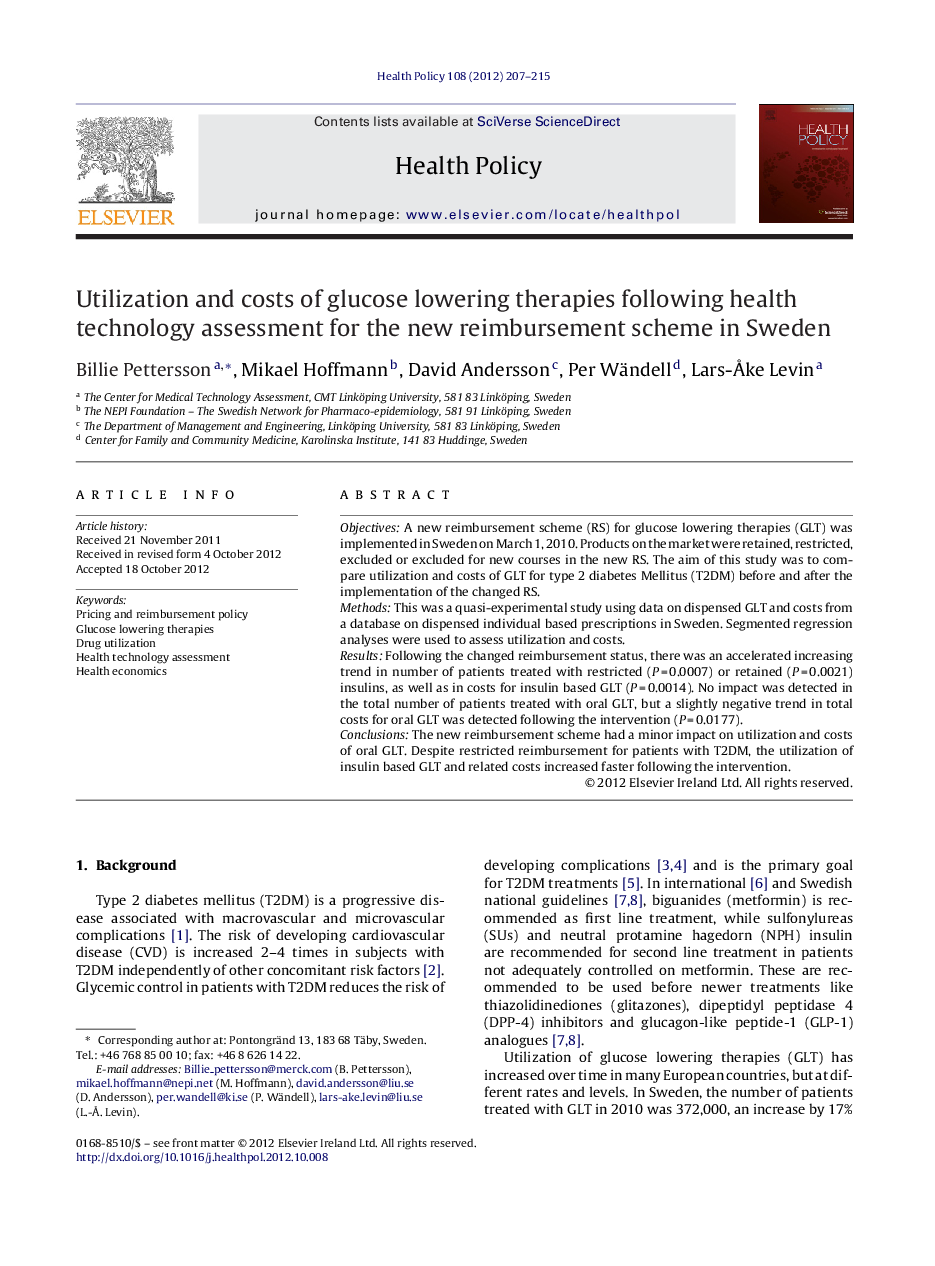| Article ID | Journal | Published Year | Pages | File Type |
|---|---|---|---|---|
| 4197879 | Health Policy | 2012 | 9 Pages |
ObjectivesA new reimbursement scheme (RS) for glucose lowering therapies (GLT) was implemented in Sweden on March 1, 2010. Products on the market were retained, restricted, excluded or excluded for new courses in the new RS. The aim of this study was to compare utilization and costs of GLT for type 2 diabetes Mellitus (T2DM) before and after the implementation of the changed RS.MethodsThis was a quasi-experimental study using data on dispensed GLT and costs from a database on dispensed individual based prescriptions in Sweden. Segmented regression analyses were used to assess utilization and costs.ResultsFollowing the changed reimbursement status, there was an accelerated increasing trend in number of patients treated with restricted (P = 0.0007) or retained (P = 0.0021) insulins, as well as in costs for insulin based GLT (P = 0.0014). No impact was detected in the total number of patients treated with oral GLT, but a slightly negative trend in total costs for oral GLT was detected following the intervention (P = 0.0177).ConclusionsThe new reimbursement scheme had a minor impact on utilization and costs of oral GLT. Despite restricted reimbursement for patients with T2DM, the utilization of insulin based GLT and related costs increased faster following the intervention.
